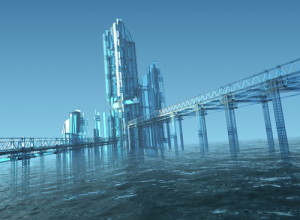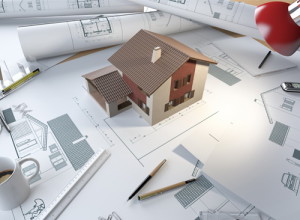Bridge Designing is a wide and far reaching area of study wherein a designer should have first seen and studied many bridges in the course of a long learning process.
 A designer should have an idea what type of beam may be suitable in the available conditions whether it’s a beam bridge an arch bridge or a suspended one. A designer should also know the influence of conditions on the choice of spans and structural systems, and should have ample experience combined with a sound learning. A few timely actions go a long way in providing solutions to circumstances that are not taught or explained anywhere and these come only with multiple years of experience.
A designer should have an idea what type of beam may be suitable in the available conditions whether it’s a beam bridge an arch bridge or a suspended one. A designer should also know the influence of conditions on the choice of spans and structural systems, and should have ample experience combined with a sound learning. A few timely actions go a long way in providing solutions to circumstances that are not taught or explained anywhere and these come only with multiple years of experience.
INPUTS REQUIRED FOR DESIGNING A BRIDGE
- A rough plan of the site showing all areas to be bridged such as rivers, streets, roads or railroads, and the contour lines of valleys.
- Longitudinal section of the ground along the axis of the planned bridge with the factors for clearing up the required flood widths.
- The requirement of the width of the bridge, width of lanes, median, walkways, safety rails etc.
- The condition of the soil for foundations, reports of earlier borings and geological situations and soil mechanics data. The extent of difficulty while laying the foundation work determines the influence on the choice of the structural system and on the economical span length.
- The prevailing local conditions like accessibility for transport of equipment, materials and structural elements.
- Weather conditions and environmental dispositions like, floods, high and low tide levels, periods of drought, range of temperatures, and length of frost periods.
- Environment topographies like, open land, flat or land, scenic country or if it’s a town with small old houses or city with high rise buildings. The scale of the environment has a direct influence on the designing of the bridge.
- The conditions in the environment like the aesthetic quality as the bridges in towns affecting the urban environment are frequently seen at close range, specifically the pedestrian bridges require more delicate shaping and treatment and the designer should frequently visit the bridge site and its location.
FINAL PROCESS IN BRIDGE DESIGN
 A bridge designer is expected to prepare a rough sketch after considering the environment, conditions, obstacles and factors prevailing at the place where he is supposed to design a bridge. Then the approval of the final design work starts after meticulous calculations of forces, stresses etc. The scaffolding and equipment needed for the construction of the specific type of bridge is to be worked out. Numerous drawings and tables with thousands of numbers and figures for all dimensions, sizes and levels is required to be made with specifications for the required type and quality of the building materials. Geared with all these inputs and resources a designer designs and creates a bridge for the ease and aid of the human beings, transportation and connections.
A bridge designer is expected to prepare a rough sketch after considering the environment, conditions, obstacles and factors prevailing at the place where he is supposed to design a bridge. Then the approval of the final design work starts after meticulous calculations of forces, stresses etc. The scaffolding and equipment needed for the construction of the specific type of bridge is to be worked out. Numerous drawings and tables with thousands of numbers and figures for all dimensions, sizes and levels is required to be made with specifications for the required type and quality of the building materials. Geared with all these inputs and resources a designer designs and creates a bridge for the ease and aid of the human beings, transportation and connections.
Awesome Facts!
The Zhaozhou Bridge is the oldest standing bridge in China being the world’s oldest stone segmental arch bridge. It was built in 605 AD but still has been maintaining its strength for more than 1400 years now.
The Inca civilization in South America used to make use of rope bridges in the Andes Mountains before the Europeans colonization in the 1500’s. These rope bridges covered canyons and gorges that allowed easy access to otherwise difficult to reach areas.
During the Industrial Revolution of the 19th century wrought iron was introduced into the design of large bridges later wrought iron was replaced by steel as it has a higher ductile strength.
The first welded road bridge was designed by Polish engineer Stefan Bryla in 1927.
The Sydney Harbor Bridge in Australia can rise or fall up to 18 cm (7.1 inches) depending on the temperature due to the steel expansion or contraction which also features 6 million rivets and weighs 39006 tones.
The Brooklyn Bridge in New York, USA connects Manhattan and Brooklyn over the East River initially when completed in 1883. It was the longest suspension bridge in the world featuring average daily traffic of around 145000 vehicles.
The longest suspension bridge in the world is the Akashi Kaikyo Bridge in Kobe, Japan which was opened for public in 1998 spanning an unbelievable 1991 meters (6529 feet).
Types of Bridges
Bridges by Structure
Girder bridges – It is the most common and most basic bridge type. It is a very simple form of bridge where a log is placed across a creek.
 Arch bridges -These bridges make use of arch as a main structural component and are made with one or more hinges, depending of what kind of load and stress forces they must endure. For example, “Old Bridge” in Mostar, Bosnia and Herzegovina and The Hell Gate Bridge in New York.
Arch bridges -These bridges make use of arch as a main structural component and are made with one or more hinges, depending of what kind of load and stress forces they must endure. For example, “Old Bridge” in Mostar, Bosnia and Herzegovina and The Hell Gate Bridge in New York.
Beam bridges – These are very basic type of bridges that are supported by several beams of various shapes and sizes that can be inclined or V shaped. For example, The Lake Pontchartrain Causeway in southern Louisiana.
Truss bridges – These are very popular bridge designs that make use of diagonal mesh of posts above the bridge. The two most common designs are the king posts (two diagonal posts supported by single vertical post in the center) and queen posts (two diagonal posts, two vertical posts and horizontal post that connect two vertical posts at the top).
Cantilever bridges – These are similar in appearance to arch bridges, but these can support the load through vertical bracing. They often use truss formation both below and above the bridge. For example, Cantilever Bridge and Queensboro Bridge in New York City.
Tied arch bridges – These are similar to arch bridges, but they transfer weight of the bridge and traffic load to the top chord that is connected to the bottom cords in the foundation of the bridge known as bowstring arches or bowstring bridges.
Suspension bridges – These bridges make use of ropes or cables from the vertical suspender to hold the weight of the bridge deck and traffic. For example, Golden Gate Bridge in San Francisco.
Cable-stayed bridges – These bridges use deck cables directly connected to one or more vertical columns either by harp design (each cable is attached to the different point of the column to create a design of “strings” or by fan design (all cables connect to one point at the top).
Fixed or moveable bridges
Fixed – Majority of bridges are fixed, with no moveable parts to provide higher clearance for river/sea transport that is flowing below them. They are designed to stay where they are fixed until they become deemed unusable or demolished.
Temporary bridges – Bridges made from modular basic components that can be moved by medium or light machinery. They are usually used in military engineering or in circumstances when fixed bridges are repaired.
Moveable – They have moveable decks, most often powered by electricity.
Types by use
Car Traffic – The most common type of bridge, with two or more lanes designed to carry car and truck traffic of various intensities.
Pedestrian -Usually made in urban environments or in terrain where car transport is inaccessible (rough mountainous terrain, forests, etc.).
Double-decked – Built to provide best possible flow of traffic across bodies of water or rough terrain. Most often they have large amount of car lanes, and sometimes have dedicated area for train tracks.
Train bridges – Bridges made specifically to carry one or multiple lane of train tracks.
Pipelines – Bridges made to carry pipelines across water or inaccessible terrains. Pipelines can carry water, air, gas and communication cables.
Viaducts – Ancient structures created to carry water from water rich areas to dry cities.
Commercial bridges – Modern bridges that host commercial buildings such as restaurants and shops.
Courtesy:
http://www.sciencekids.co.nz/sciencefacts/engineering/bridges.html
http://www.historyofbridges.com/facts-about-bridges/types-of-bridges/
 The word education literally means, “To draw out and polish what is already inside and not mere stuffing of unrelated things”. Essentially it is directed at the students as they are the future careerists but it also has a spiritual implication which emphasizes that if you are working at the wrong place you can never be peaceful, happy, balanced and purposeful. Students these days prefer drifting away from traditional choices to their career and combine their inner passion when exploring the available job openings.
The word education literally means, “To draw out and polish what is already inside and not mere stuffing of unrelated things”. Essentially it is directed at the students as they are the future careerists but it also has a spiritual implication which emphasizes that if you are working at the wrong place you can never be peaceful, happy, balanced and purposeful. Students these days prefer drifting away from traditional choices to their career and combine their inner passion when exploring the available job openings.









